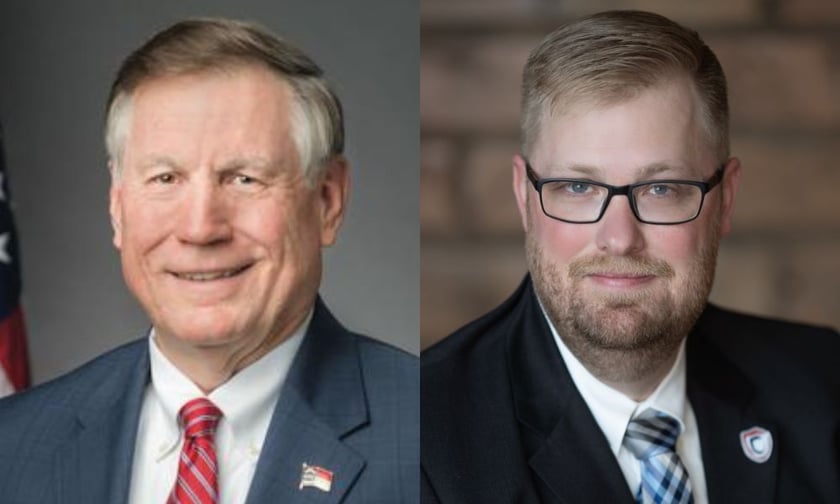

North Carolina Insurance Commissioner Mike Causey (pictured above, left) has called for the elimination of the Federal Insurance Office (FIO), stating that its functions are redundant, and that insurance regulation should remain at the state level.
“If you go back to 1945, when Congress passed the McCarran-Ferguson Act, it delegated regulation of insurance to the states,” Causey said. “It’s worked very well since 1945 and that’s where it needs to stay.”
The FIO, created under the Dodd-Frank Wall Street Reform and Consumer Protection Act, would require congressional action for its dissolution. In a report from AM Best, Causey indicated that other state insurance commissioners share his view.
North Dakota Insurance Commissioner Jon Godfread (pictured above, right) echoed this sentiment, saying that the FIO was established in response to the 2008 financial crisis but has since failed to demonstrate its necessity.
“Since its inception, FIO has demonstrated that it has no discernible purpose overseeing insurance and only blurs the lines of regulatory oversight for the insurance industry,” Godfread said.
He emphasized the resilience of state-based insurance regulation, which has operated for over 150 years.
Godfread, who recently assumed the presidency of the National Association of Insurance Commissioners (NAIC), suggested that the FIO’s responsibilities could be absorbed by other federal offices, such as the Treasury Department.
While advocating for the FIO’s elimination, Causey acknowledged some areas where federal involvement in insurance remains important. He highlighted the need for increased support for the Senior Health Insurance Information Program (SHIIP), which provides guidance on Medicare and long-term care insurance.
Causey noted the current $54 million appropriation for SHIIP across all states and territories is insufficient and suggested tripling the funding.
Causey also expressed support for the National Flood Insurance Program (NFIP), despite acknowledging its challenges.
“The federal flood insurance program is in deep debt, and it is in deep debt because so few people participate in the program,” Causey said. He emphasized the issue of limited participation, particularly in high-risk areas, and the impact on the program’s sustainability.
Referencing disasters such as Hurricane Helene and Hurricane Florence, Causey pointed out that flood insurance coverage remains low. He noted that less than 2% of homeowners affected by Hurricane Helene were insured, and fewer than 3% of North Carolina coastal homeowners had flood insurance when Hurricane Florence struck in 2018.
While supportive of the NFIP, Causey sees a role for the private market in addressing gaps in flood insurance coverage. He encouraged greater participation from private insurers to offer more options and comprehensive policies.
“The (flood policy) forms are approved. What we’d like to see is more insurance companies offering private flood insurance policies and giving consumers more choices,” Causey said, adding that private policies often provide higher limits and broader coverage.
The debate over the FIO’s future comes as state insurance regulators continue to advocate for localized oversight.
What are your thoughts on this story? Please feel free to share your comments below.
